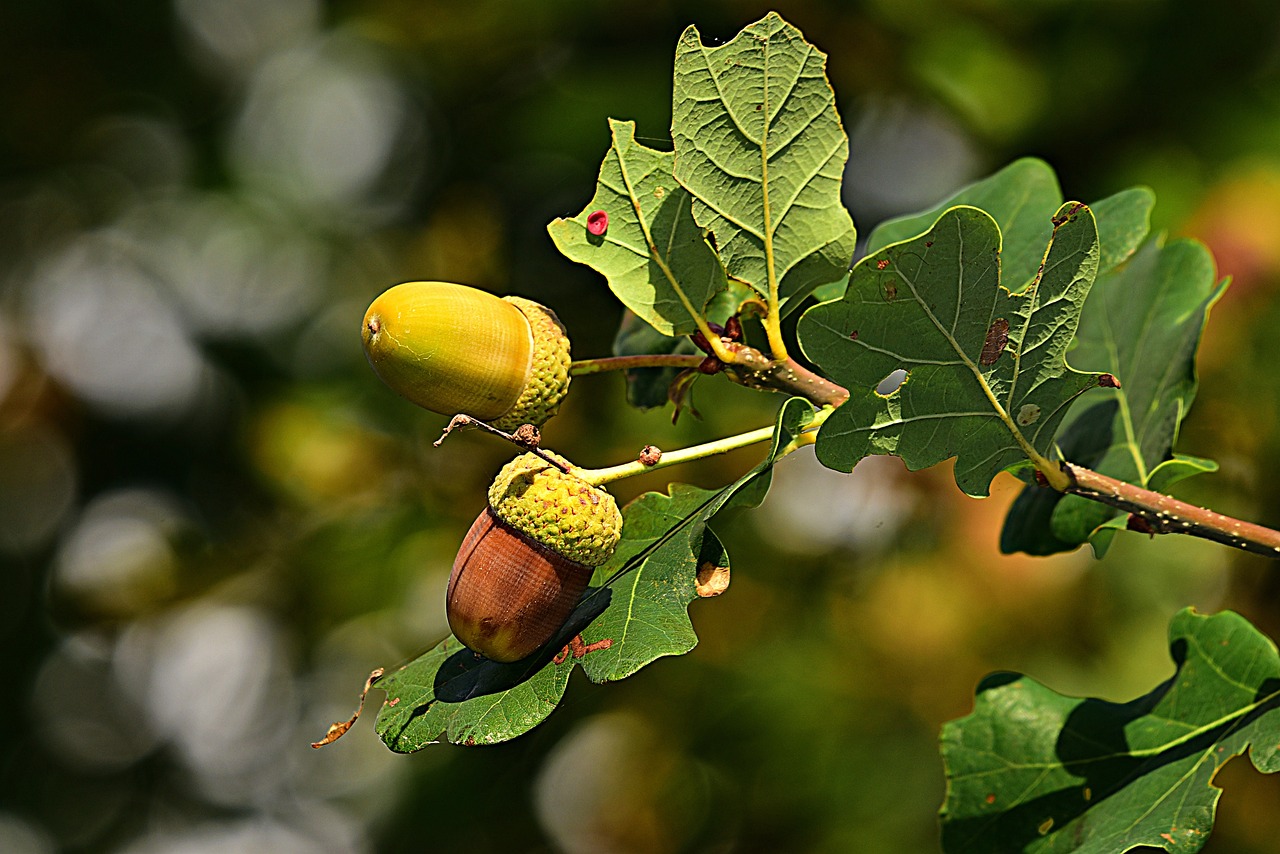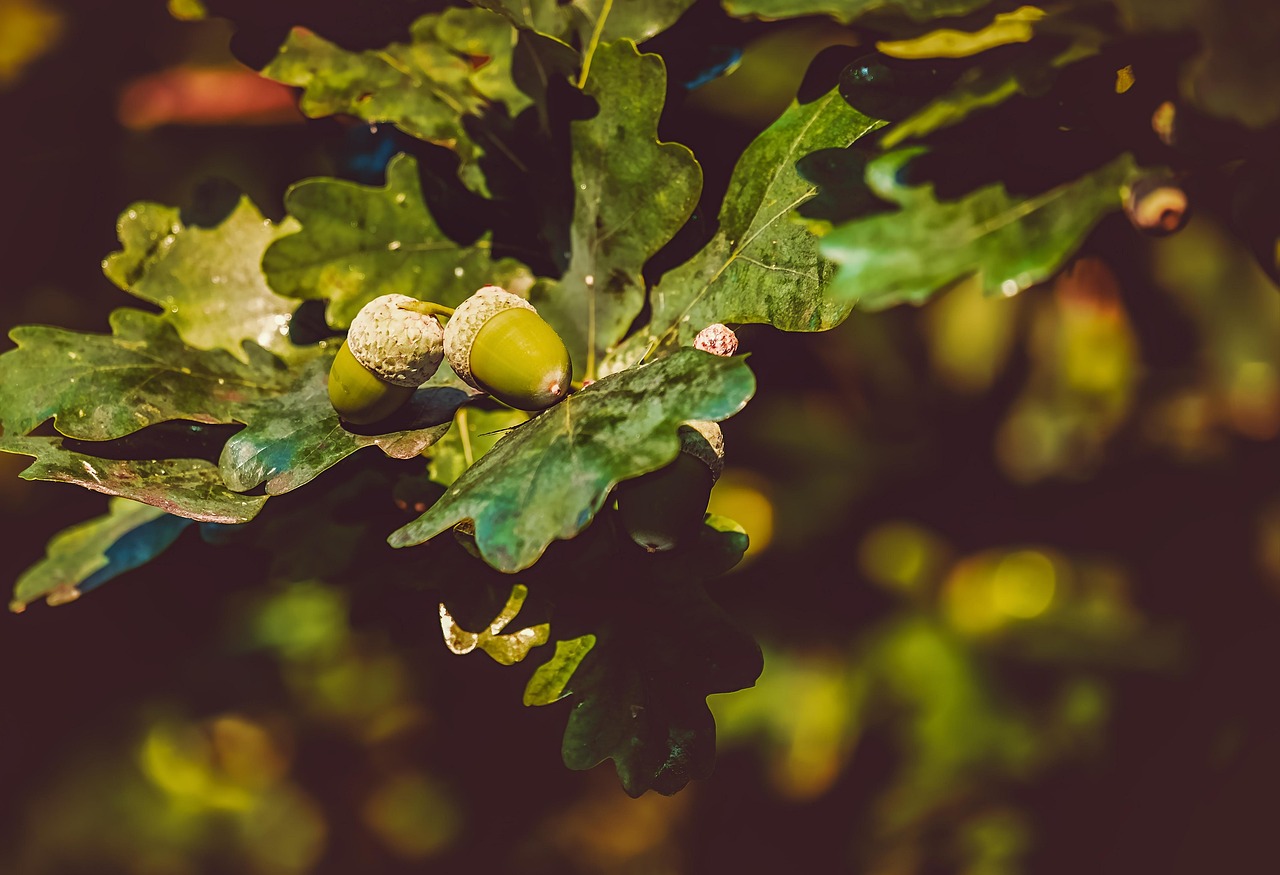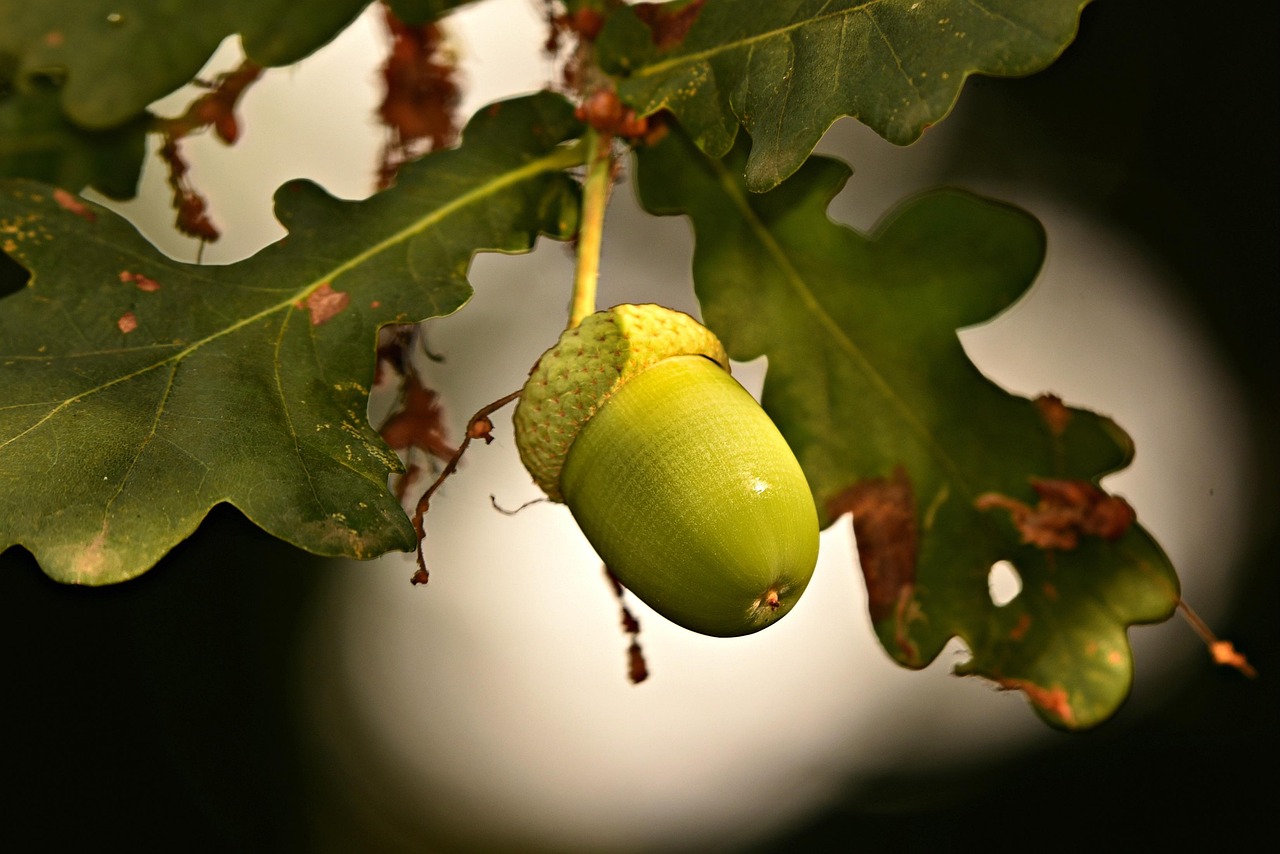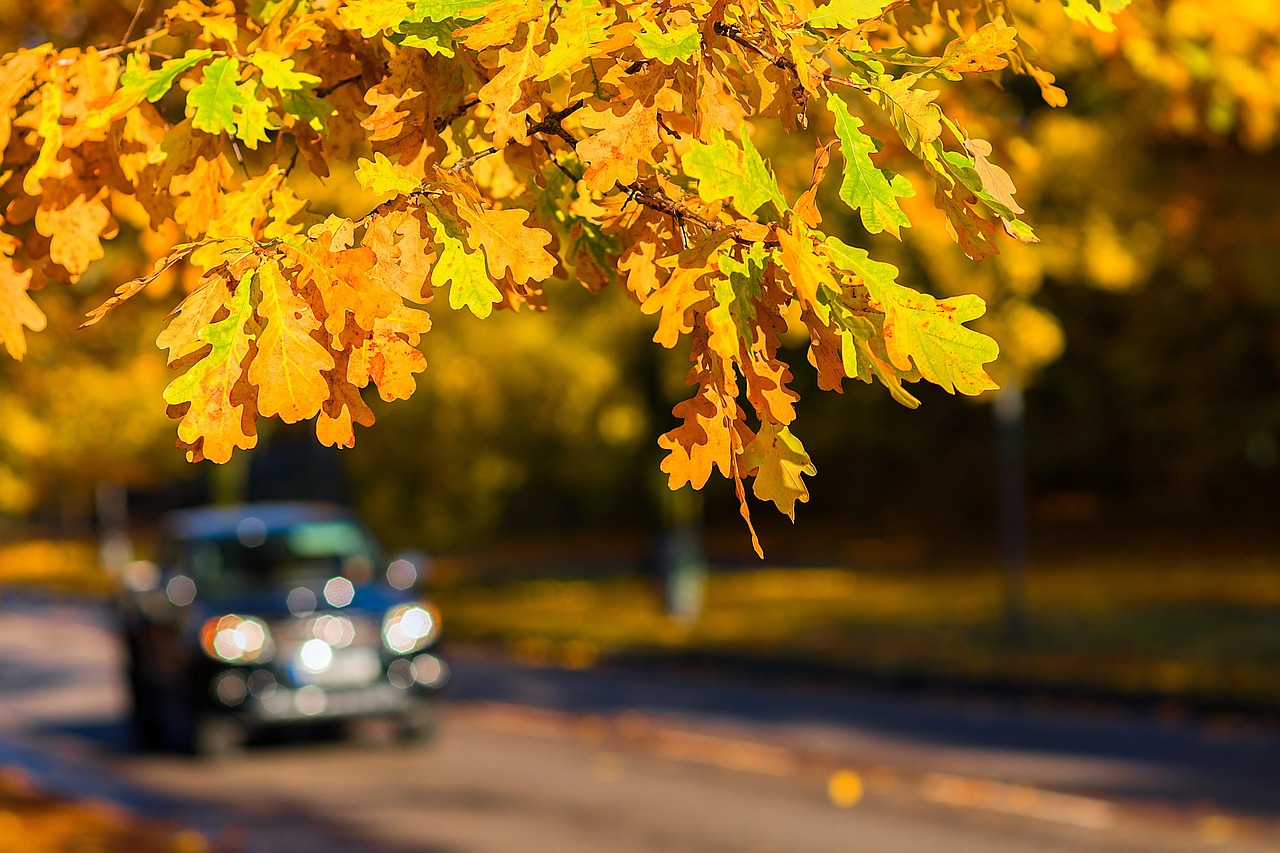Starting oak trees from acorns involves selecting healthy acorns, soaking them to encourage germination, and planting them in nutrient-rich soil. The best time to plant is in the fall or spring. Providing adequate sunlight and water is crucial during the growth process to ensure successful establishment.
Understanding Oak Trees

Oak trees are among the most majestic and long-lived trees in the world. Known for their strength and resilience, they play a vital role in ecosystems by providing habitat and food for various wildlife. Oaks are also valued for their timber, which is used in furniture making, flooring, and barrels for aging wines.
There are over 600 species of oak trees globally, but the most common types found in North America include the White Oak, Red Oak, and Live Oak. Each species has unique characteristics and growth habits that can influence how you start them from acorns.
Acorn Selection
The first step in starting oak trees is selecting the right acorns. Healthy acorns are usually plump and free from holes or blemishes. To ensure you choose good acorns, consider the following:
- Look for acorns that have fallen from a tree during the autumn months.
- Avoid acorns that float when placed in water; these are often damaged or dried out.
- Choose acorns from a tree that shows good health, which can be identified by its robust growth and absence of pests.
Preparing Acorns for Germination
Once you have selected your acorns, the next step is to prepare them for germination. This process typically involves soaking the acorns and possibly stratifying them to mimic winter conditions, which helps to trigger the germination process.
Soaking Acorns
Soaking acorns in water for 24 hours can help soften their hard outer shell. After soaking, discard any acorns that float as they are likely not viable. Here’s how to soak your acorns:
- Fill a bowl or container with room temperature water.
- Add the acorns and let them soak for one day.
- After soaking, remove the acorns and dry them gently with a towel.
Stratification Process
If you live in a region with distinct seasons, stratifying your acorns can improve germination rates. This mimics the natural winter conditions that many species require before sprouting. To stratify your acorns:
- Mix the soaked acorns with moist peat moss or sand in a plastic bag.
- Seal the bag and place it in your refrigerator for 30 to 60 days.
- Check periodically for signs of sprouting or mold.
Planting Acorns
After stratification, it is time to plant your acorns. Early spring is generally the best time for planting, although fall can also be suitable if conditions allow.
Choosing the Right Location
Selecting an appropriate location is crucial for the growth of your oak tree. Oak trees prefer:
- Well-drained soil with plenty of nutrients.
- A sunny spot that receives at least six hours of direct sunlight each day.
- A location that offers enough space for the tree to grow, as oaks can reach significant heights and widths.
Planting Steps
To plant your acorns successfully, follow these steps:
- Dig a hole about 1-2 inches deep.
- Place the acorn in the hole with the pointed end facing down.
- Cover the acorn with soil and gently tamp it down.
- Water thoroughly after planting to settle the soil around the acorn.
With proper care and attention, your oak trees will begin to grow, contributing beauty and biodiversity to your landscape for generations to come.
Care and Maintenance of Young Oak Trees
Once your acorns have germinated and seedlings have emerged, the next critical phase is nurturing these young oak trees. Proper care during the early stages of growth is vital to ensure their long-term health and vitality. This section provides guidelines on watering, fertilizing, and protecting your oak trees from pests and diseases.
Watering Young Oak Trees
Watering is one of the most essential aspects of caring for young oak trees. Newly planted oaks require consistent moisture to establish their root systems. Here are some tips for effective watering:
- Water deeply but infrequently. This encourages the roots to grow deeper into the soil.
- Check the soil moisture regularly. The top inch of soil should be dry before watering again.
- Use a soaker hose or drip irrigation if possible, as this reduces water loss through evaporation.
Fertilizing Young Oak Trees
Young oak trees benefit from proper nutrition as they grow. Although oaks can thrive in poor soil, adding fertilizer can help promote healthy growth. Consider the following:
- Use a balanced, slow-release fertilizer that includes nitrogen, phosphorus, and potassium.
- Apply fertilizer in early spring before new growth begins.
- Follow the manufacturer’s instructions regarding application rates to avoid over-fertilizing.
Mulching for Soil Health
Applying mulch around the base of young oak trees offers multiple benefits. It helps retain moisture, suppresses weeds, and adds organic matter to the soil as it decomposes. Here’s how to effectively use mulch:
- Select organic mulches such as wood chips, bark, or leaves.
- Spread a 2-3 inch layer of mulch in a circle around the tree, keeping it a few inches away from the trunk.
- Replenish mulch as needed to maintain coverage and prevent weed growth.
Pest and Disease Management
Young oak trees can be susceptible to various pests and diseases. Early detection and management are crucial for preventing significant damage. Here are some common issues to watch for:
Pests
- Oak Weevils: These pests feed on leaves, causing notching. Handpicking or using insecticidal soap can help control them.
- Aphids: These small insects suck sap from leaves and can lead to stunted growth. Introducing beneficial insects like ladybugs can help manage their population.
- Caterpillars: Various caterpillars may feed on oak leaves. Monitoring and manually removing them can reduce their impact.
Diseases
In addition to pests, young oaks may face diseases. Recognizing symptoms early can prevent the spread:
- Oak Wilt: A serious disease that causes leaves to wilt and brown. If suspected, consult a local arborist for management options.
- Powdery Mildew: This fungal disease appears as a white powder on leaves. Improving air circulation and avoiding overhead watering can minimize its occurrence.
Transplanting Young Oak Trees

As your oak trees grow, you may need to consider transplanting them to a permanent location if they were initially planted in containers or small spaces. Transplanting requires careful planning to minimize stress on the tree:
- Choose a cool day for transplanting to reduce stress on the tree.
- Water the tree thoroughly a day before digging it up to ensure moisture retention.
- Dig a wide trench around the root ball, ensuring you capture as many roots as possible.
- Replant in the new location immediately, ensuring it is at the same soil depth as before.
The process of nurturing your young oak trees will set the foundation for their growth into strong, mature specimens that can thrive in your landscape for many years. Regularly monitoring their health will help you address any issues promptly, ensuring your oak trees flourish.

Common Challenges in Growing Oak Trees
While growing oak trees from acorns can be a rewarding experience, several challenges may arise during the process. Understanding these challenges can help you prepare and respond effectively. This section will discuss common issues such as environmental factors, competition with other plants, and potential diseases.
Environmental Factors
Environmental conditions play a crucial role in the health and growth of oak trees. Here are some key factors to consider:
- Temperature: Oak trees prefer temperate climates. Extreme temperatures, whether too hot or too cold, can stress young trees. It’s important to protect them from frost during early spring or extreme heat during summer.
- Soil Quality: Poor soil quality can hinder growth. Conducting a soil test before planting can help determine pH levels and nutrient availability. Amend the soil as needed to ensure it is suitable for oak growth.
- Water Availability: Both drought and excessive moisture can affect young oaks. Ensure that your trees receive consistent watering, especially during dry spells, while also ensuring the soil drains well to prevent root rot.
Competition with Other Plants
Young oak trees may face competition from surrounding vegetation. Other plants can compete for vital resources such as sunlight, water, and nutrients. To mitigate this competition, consider the following strategies:
- Weed Control: Regularly remove weeds and other competing plants around the base of your oak tree. This can be done by hand or with mulch that suppresses weed growth.
- Spacing: When planting multiple oak trees or other species, ensure adequate spacing between them to reduce competition. This allows each tree access to sunlight and nutrients.
- Planting in Isolation: If possible, plant young oaks in an area that is clear of other competing vegetation, especially during their first few years of growth.
Seasonal Care for Oak Trees
Caring for oak trees involves different tasks throughout the seasons. Understanding the seasonal care requirements can help ensure their continued health and growth.
Spring Care
Spring is a critical time for oak trees as they emerge from dormancy and begin new growth. Consider these care tips:
- Pruning: If necessary, prune dead or damaged branches to promote healthy new growth. Be cautious not to remove more than 25% of the tree’s canopy at one time.
- Pest Monitoring: Keep an eye out for pests that may emerge as temperatures rise. Early detection is key to effective management.
- Fertilization: Apply a balanced fertilizer to support new growth, following the guidelines established earlier.
Summer Care
During the summer months, oak trees require consistent care, especially in hotter climates:
- Irrigation: Ensure your young trees receive sufficient water during dry spells. Deep watering is essential to encourage root development.
- Mulching: Maintain mulch around the base to help retain soil moisture and regulate temperature.
- Pest Inspection: Continue to monitor for pests and diseases that may thrive in warmer weather.
Fall Care
As fall approaches, oak trees prepare for dormancy. This season is crucial for long-term health:
- Watering Adjustment: Reduce watering as temperatures drop and rainfall increases.
- Leaf Cleanup: Rake and dispose of fallen leaves, particularly if they appear diseased, to prevent fungal infections.
- Winter Preparation: If your area experiences harsh winters, consider wrapping young trunks with burlap to protect them from frost damage.
Winter Care
In winter, oak trees enter a dormant state. While they need less attention, some care is still necessary:
- Monitoring Snow Loads: Remove heavy snow accumulation from branches to prevent breakage.
- Pest Protection: Check for signs of pests that may overwinter in the bark or roots.
- Planning for Spring: Use this time to plan any changes in care or landscape design for the upcoming growing season.
By being proactive and understanding these seasonal needs and challenges, you can foster an environment where your oak trees thrive throughout their life cycle.
Additional Resources for Oak Tree Growth

As you embark on your journey of growing oak trees from acorns, utilizing resources and materials can enhance your success. Here are some valuable resources that can aid in your oak tree cultivation:
- Local Nurseries: Consult with local plant nurseries for advice on specific oak species that thrive in your region. They can provide insights into soil types, pests, and local climate considerations.
- Extension Services: Many universities offer agricultural extension services that provide expert advice on tree care and pest management. These resources often have publications or workshops focused on tree health.
- Online Communities: Join online forums or social media groups dedicated to gardening and tree planting. Engaging with fellow enthusiasts can provide support and shared experiences.
- Books and Guides: Look for books specifically about oaks or tree care that can provide detailed insights into the growth cycle, species characteristics, and cultivation techniques.
Potential Benefits of Growing Oak Trees
Growing oak trees extends beyond personal enjoyment; they offer numerous ecological and community benefits:
- Biodiversity: Oaks support a wide range of wildlife, including birds, insects, and mammals. Their acorns provide food for many species.
- Air Quality Improvement: Trees, including oaks, improve air quality by absorbing carbon dioxide and releasing oxygen.
- Soil Stabilization: The extensive root systems of oak trees help prevent soil erosion and maintain soil health.
- Aesthetic Value: Oaks add beauty to landscapes and provide shade, making outdoor spaces more enjoyable.
- Cultural Significance: Oaks have historical and cultural importance in many communities, often symbolizing strength and longevity.
Final Thoughts
Starting oak trees from acorns is an enriching endeavor that connects you to nature while contributing to the environment. With proper care, knowledge, and patience, you can successfully nurture oak trees that will thrive for generations to come. From selecting healthy acorns to understanding the seasonal needs of these majestic trees, each step is vital in ensuring their growth and health.
Remember that growing oak trees is not only about the immediate results but also about fostering a living legacy. As these trees mature, they will provide shade, beauty, and habitat for wildlife while enhancing your landscape. Whether you’re starting this journey for personal enjoyment or environmental stewardship, the rewards are plentiful.
By taking the time to educate yourself about the unique needs of oak trees and applying this knowledge throughout the seasons, you will establish a thriving environment for these magnificent trees. Celebrate each milestone in their growth and enjoy the process of watching them flourish.
In conclusion, with dedication and a commitment to proper care, your effort in starting oak trees from acorns will not only beautify your surroundings but also contribute positively to the planet’s health for years to come.
